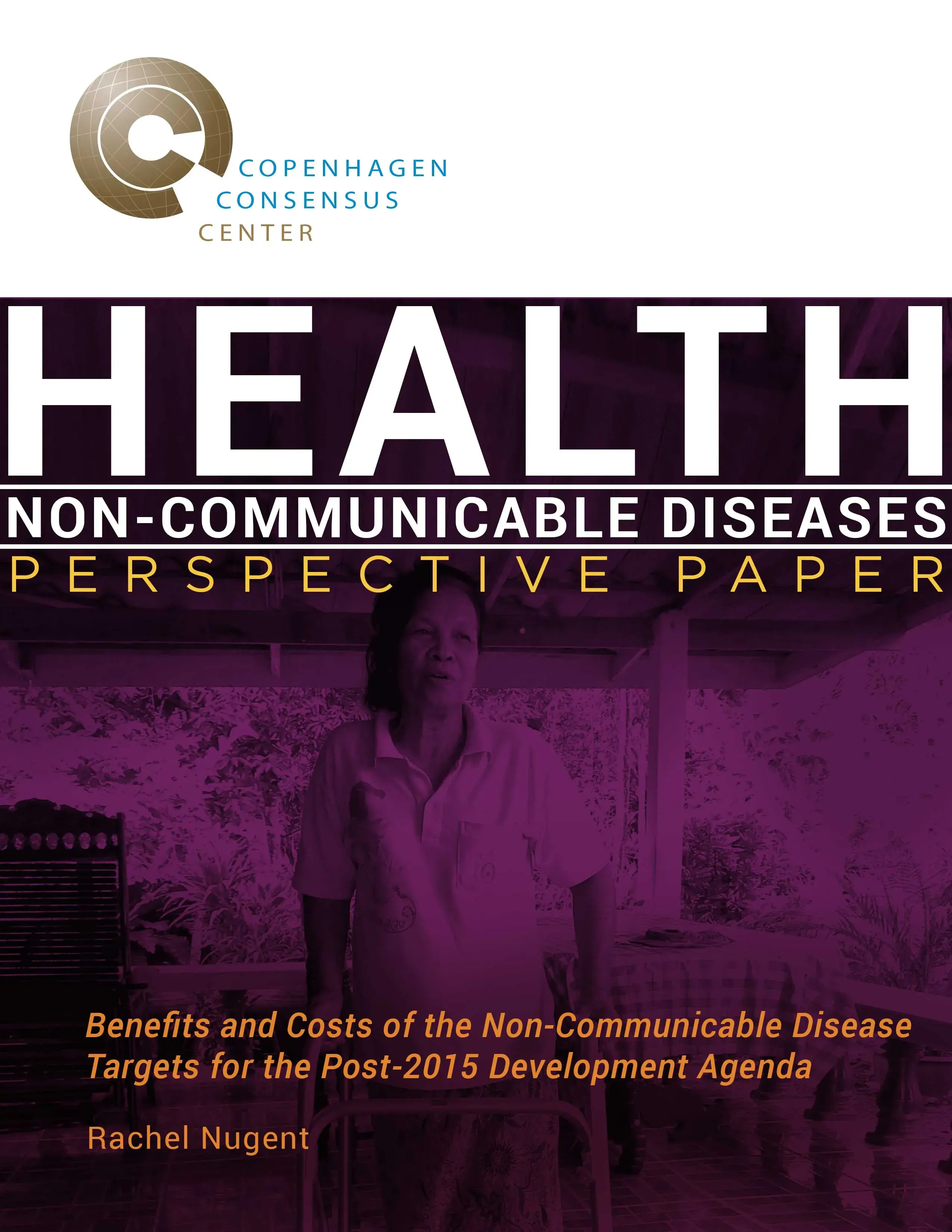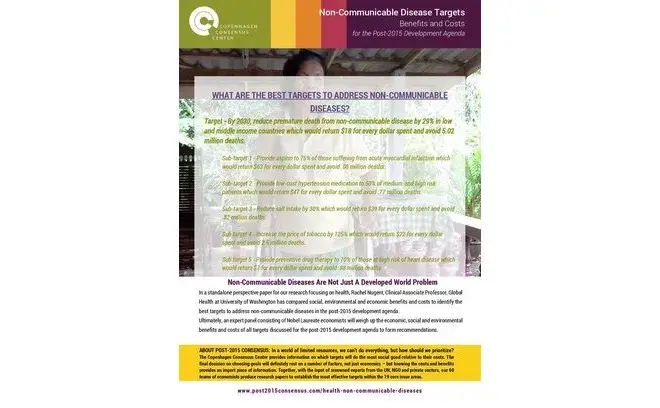Health: Non-Communicable Diseases
Summary of the targets from the paper
| Target | Annual benefits ($m)* |
Annual costs ($m) |
Benefit for Every Dollar Spent |
|---|---|---|---|
| Aspirin therapy at the onset of AMI (75% coverage) |
$836 | $27.40 | $31 |
| Reduce salt content in manufactured foods by at least 30% |
$12,121 | $638 | $19 |
| Increase tobacco price by 125% through taxation | $37,194 | $3,548 | $10 |
| Secondary prevention of CVD with polydrug (70% coverage) |
$13,116 | $3,850 | $3 |
| Total | $63,267 | $8,063 | $8 |
*Authors assume 1 DALY averted = $1,000 USD, 3% discounting
Lives saved by intervention (millions in 2030)

Perspective Paper
Rachel Nugent, Clinical Associate Professor of Global Health at University of Washington, examines the costs and benefits of reducing premature mortality from non-communicable diseases (NCDs) by 2030. Debunking the idea that NCDs are only a ‘first world problem’, Nugent shows that NCDs, if unaddressed will lead to about 20 million early deaths by 2030 – 90% of which will occur in low and middle-income countries. She argues for five interventions such as raising tobacco tax and reducing salt intake, which target a host of prevalent NCDs. Together these interventions could reduce premature mortality from NCDs by 29% by 2030, saving some 5 million lives.
NCDs are the dominant health issue in almost all countries and regions. Even in poor countries, they are not a future problem. They are very present and involve significant costs to society, to governments, and to individuals and households... One might reasonably ask, then, why are NCDs not among the stated priorities of more developing country health strategies and, by extension, the major global health funders?"
- Rachel Nugent

The Post-2015 Consensus project brings together 60 teams of economists with NGOs, international agencies and businesses to identify the targets with the greatest benefit-to-cost ratio for the UN's post-2015 development goals.




